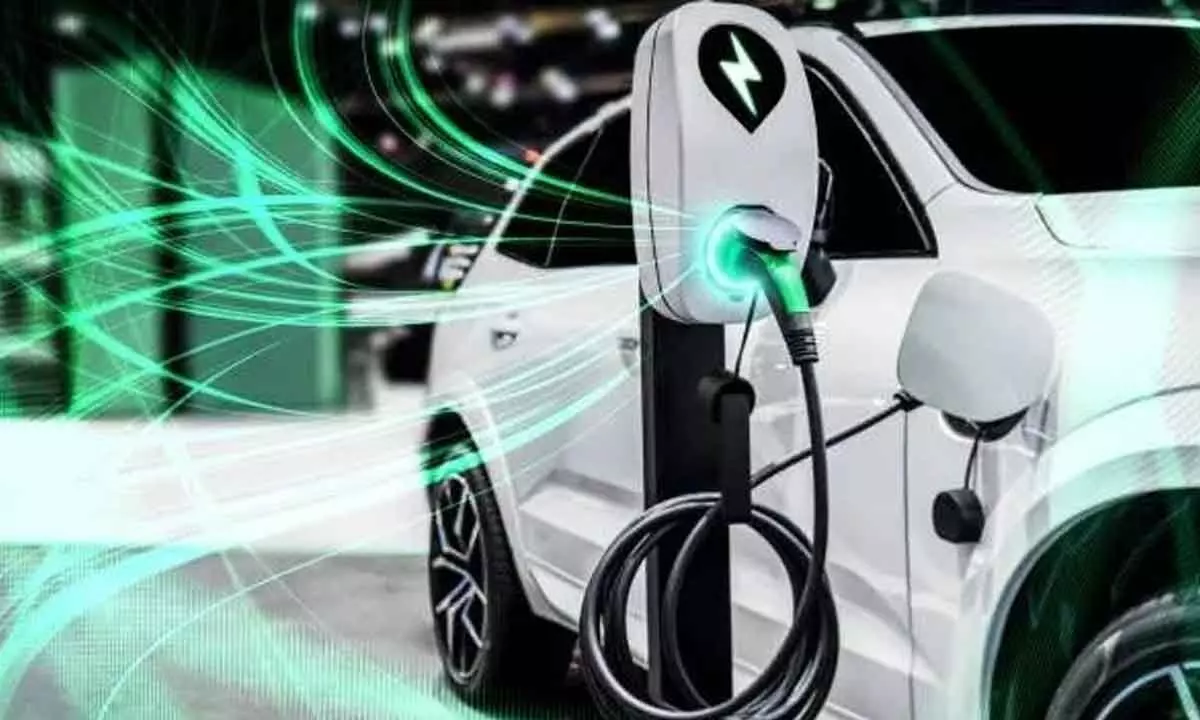Are electric vehicles really futuristic remains a million dollar question
Around 78% of EVs sold are in the premium segment; cost-effective variants are scarce
image for illustrative purpose

The EV industry is characterized by rapid technological advancements. By 2030, we can expect Indian EV manufacturers to develop and introduce innovative battery technologies, longer-range EVs, and advanced charging solutions
Although electric vehicles (EVs) took roughly six years to move from one per cent market share to touch 10%, it will take just six more years to reach 80% adoption, says an RMI report.
Electric vehicles are the key technology to decarbonise road transport, a sector that accounts for over 15% of global energy-related emissions. Recent years have seen exponential growth in the sale of electric vehicles together with improved range, wider model availability and increased performance.
Passenger electric cars are surging in popularity to the extent that the general assumption is that 18% of new cars sold in 2023 were electric, a year in which their sales reached record levels by growing to 7.6 per cent of the overall market. That’s a significant improvement over their 5.9 per cent market share in 2022 and 3.2 per cent the ear before.
If the growth experienced in the past two years is sustained, by 2030, CO2 emissions from cars can be put on a pathway aligned with the Net Zero Emissions by 2050 (NZE) scenario. However, electric vehicles are not yet a global phenomenon. Sales in developing and emerging economies have been slow due to their relatively high purchase price and a dearth of charging infrastructure availability.
And this is another big wrinkle to the EV slowdown story. Lower prices would motivate demand, but they'd be very painful for carmakers.
The average EV used to sell for over $66,000, which is now down to $50,798, according to Kelley Blue Book. That's just about two grand more than the average for all vehicles, including gas-powered ones, of $48,759. That's a far narrower gap than a few years ago.
But most EVs sold — 78%, according to JD Power — are still in the premium segment. Truly affordable EVs are few and far between.
Tesla CEO Elon Musk talks about this a lot. "There are lots of people who want to buy our cars. They just can't afford it," he told investors last month, reiterating a common theme. The reason Tesla is "between two major growth waves," he says, is that they need to design their cheaper next-generation vehicle platform before launching another big expansion.
Batteries are expensive, and legacy automakers are still figuring out how to make EVs. That means they're more expensive to make than gas-powered cars — and therefore, less profitable.
California and other states, as well as Europe, have set 2035 as the year by which all new cars have to be zero-emission. After all, cleaning up the world's fleet of vehicles is a key part of the plan to fight climate change.
Pulling that off will require more EV chargers — and better chargers. It will require a lot of people becoming comfortable with a new technology. And it will require prices to come down.
Buyers may become more receptive to EVs in response to resolutions to infrastructure issues and pricing concerns. Still, there’s a long way to go before we reach the levels of adoption targeted by automakers and the government.
Electric vehicle battery costs should fall below $100/kWh by 2026, according to BloombergNEF’s 2022 Battery Price Survey, making EVs much more affordable. In addition, without the fuel or maintenance costs of ICE vehicles, EVs will also be cheaper to operate, which could further spur adoption.
The Indian electric vehicle (EV) industry is at an inflection point, poised for significant growth and transformation by 2030. With a strong emphasis on reducing pollution, lowering carbon emissions, and achieving energy efficiency, the Union government has been actively promoting the adoption of electric vehicles.
In this article, we will delve into the key trends, challenges and opportunities that the Indian EV industry is likely to encounter by 2030.
In 2030, the Indian EV market is expected to experience exponential growth. Increasing consumer awareness, improved charging infrastructure, and a wider range of EV options will contribute to a surge in adoption. Electric two-wheelers, three-wheelers, and small electric cars are likely to dominate the market.
The EV industry is characterized by rapid technological advancements. By 2030, we can expect Indian EV manufacturers to develop and introduce innovative battery technologies, longer-range EVs, and advanced charging solutions. This will address some of the current concerns regarding range anxiety and charging accessibility.
The Indian EV industry in 2030 will place a greater emphasis on sustainability. Manufacturers are likely to focus on reducing the carbon footprint of EV production and promoting recycling and reusing materials. Localization of EV components and batteries will also gain prominence in the endeavour to reduce dependence on imports.

